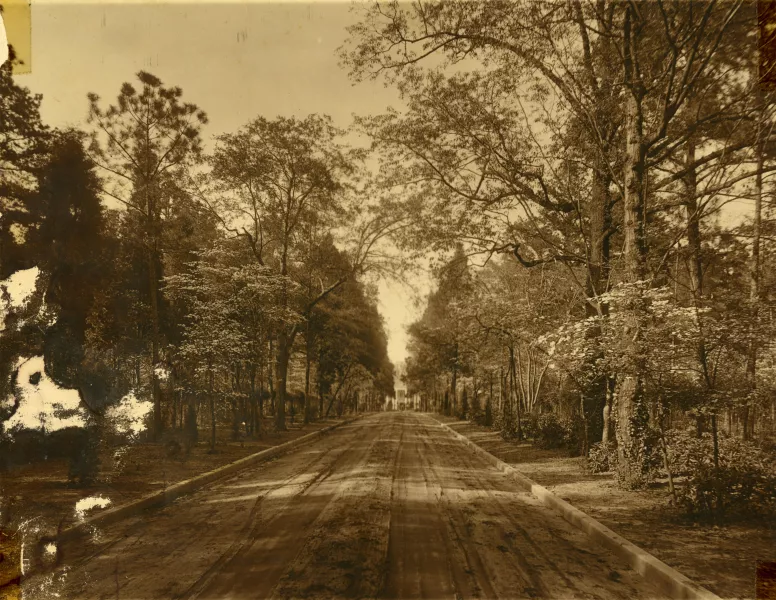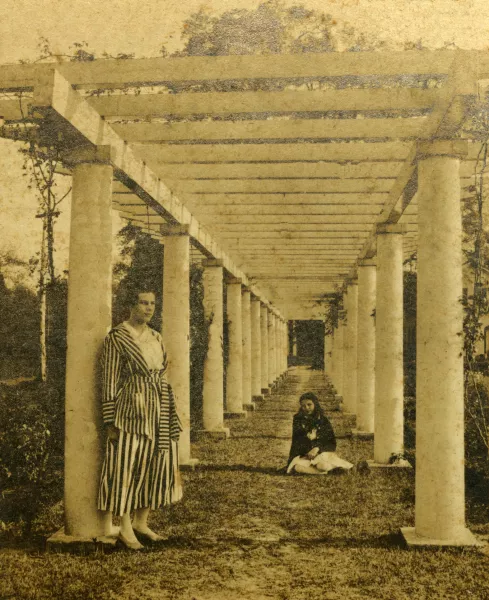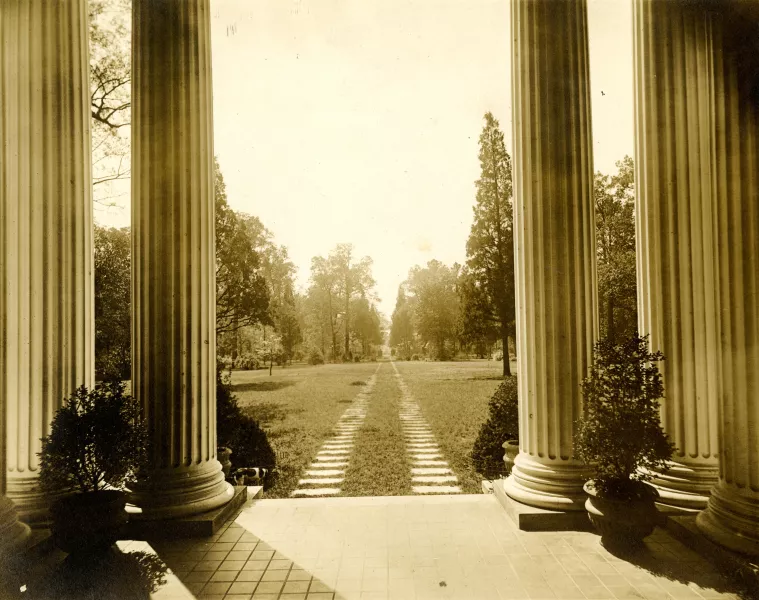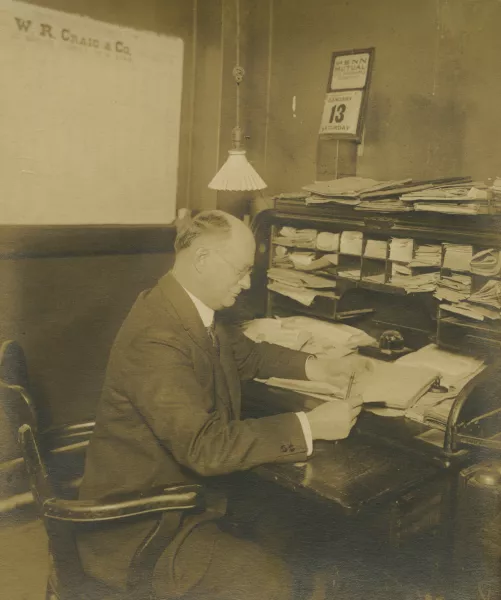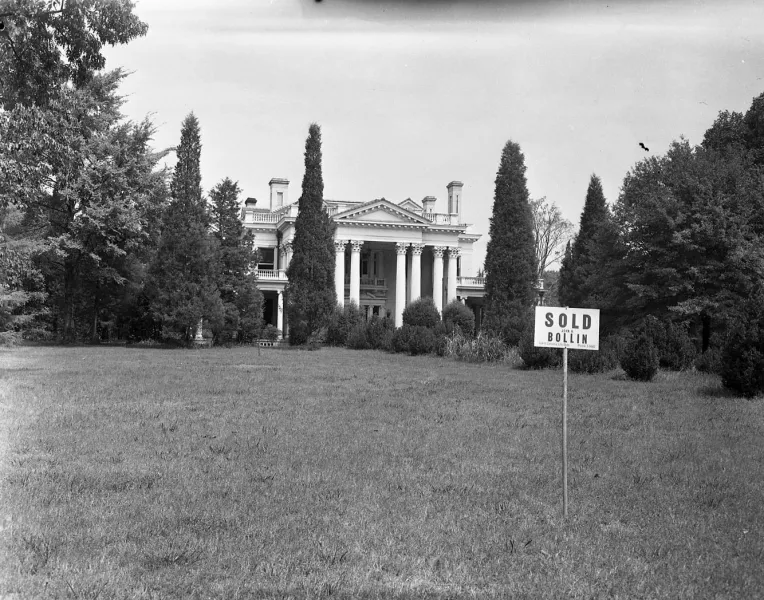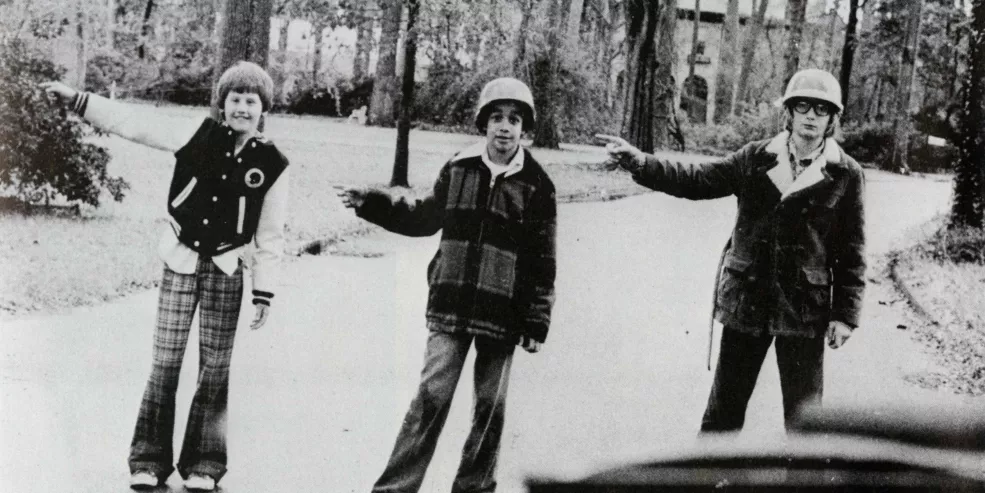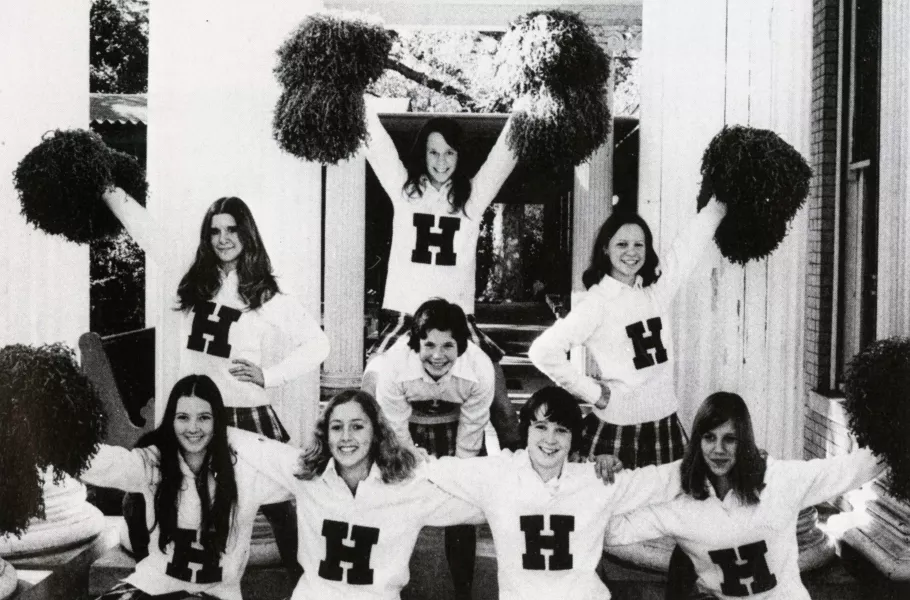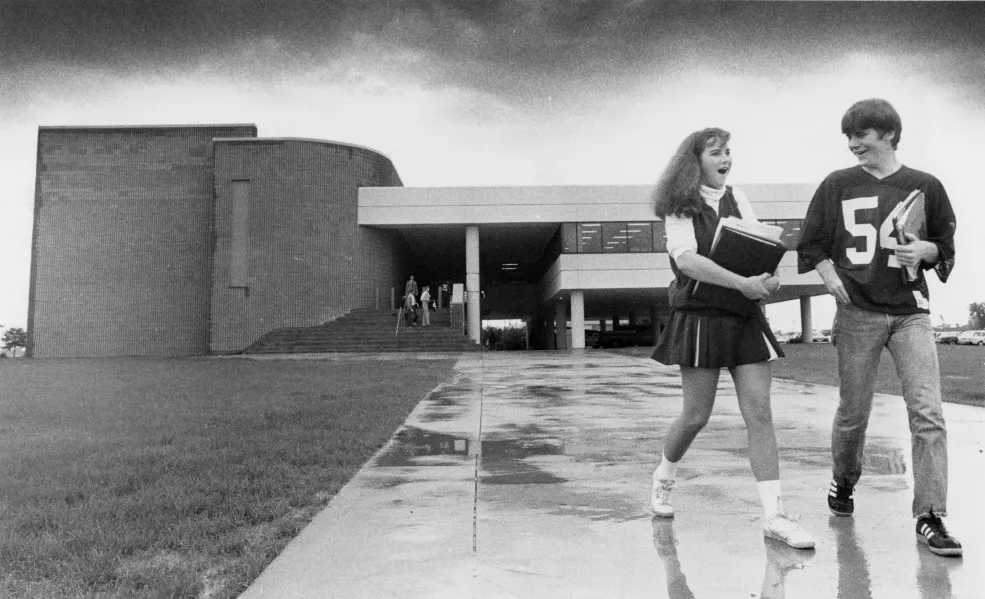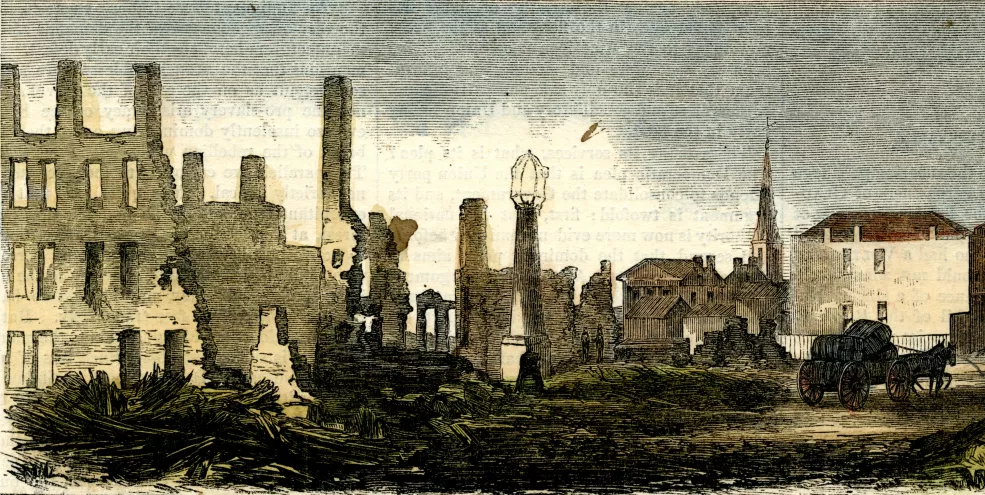Intersection of Elizabeth and Devine Streets
Site of Heath Estate
During the early 20th century, travelers on Garners Ferry Road (Devine Street) enjoyed an unobstructed view of one of Columbia’s finest residences. Situated at the end of Pinewood Avenue (later renamed Elizabeth Avenue), Moses Chappell Heath’s 1914 Neoclassical mansion and surrounding 12-acre estate shaped the development of this prestigious suburb. Upon completion, the Heath Mansion was lauded for its “perfect conformity” to its “natural environment and conditions.” Though the mansion was demolished in 1975, its legacy and that of its builder remains vital today.
Located to the rear of the mansion stood a classically inspired pergola that stretched to the north of the property. In addition to pleasure gardens, the estate also featured fruit and vegetable gardens, all of which were tended by the estate’s master gardener B. VanVeen, a native of Holland, and George Williams, who assisted him in grounds work, in addition to other duties.
Moses Chappell Heath
In 1911, cotton and real estate broker M.C. Heath purchased a tract of land that ran from Garners Ferry Road (today Devine Street) to Trenholm Road. At the time, his real estate investment was nearly two miles from Columbia’s city limits. As an influential businessman, Heath maintained an office at 1338 Main Street in the National Loan and Exchange Building, South Carolina’s first skyscraper (today’s Barringer Building), built in 1903. Likely due to failing health, Heath eventually ceased operating his downtown office and died in 1933. Heirs of his property remained at Heathwood and later expanded his vision for the developing suburban neighborhood.
Evolution of Heathwood
A 1950 plat of Heathwood Circle shows early development and subdivision of the Heathwood neighborhood. Easily discernable is the magnitude of the family’s former estate and the layout of its grounds. From its inception, Heathwood’s growth was intended to be influenced, if not dictated, by the placement of its primary estate.
Originally called Pinewood Avenue, the boulevard that drew visitors to the Heath estate from Devine Street was renamed Elizabeth Avenue in honor of Elizabeth Heath Coleman, one of M.C. Heath’s two daughters.
Site of Heathwood Hall Episcopal School
On the death of M.C. Heath’s daughter, Elizabeth Heath Coleman, the mansion was sold to the Episcopal Diocese of Upper South Carolina for use as a school. Heathwood Hall Episcopal School was subsequently established by the Diocese of Upper South Carolina, under the terms of the will of Francis Marion Weston. Within eight years of the school’s opening, the original grounds immediately surrounding the former mansion were subdivided into additional lots.
Heathwood Hall Episcopal School operated out of the mansion until 1974 when it moved to its present location off Bluff Road. Proposals were made to turn M.C. Heath’s former estate into the location of the South Carolina Governor’s Mansion. Tragically, the house was demolished in 1975, just days before it was to be recommended for inclusion within the National Register of Historic Places. To this day this controversial event bears witness to the necessity of recognizing notable historical architecture and its potential value to later generations.
Site of Ursuline Convent and Valle Crucis
Previously known as “Valle Crucis” and owned by Civil War Colonel Ellison Keitt, the 12-acre property that became Heathwood was once home to Ursuline nuns and their students. Forced to relocate when their original Richardson Street (today’s Main Street) convent was burned by the Union army, the sisters and their female pupils remained at Valle Crucis from August 1865 until March 1888. Seeking roomier accommodations, the sisters eventually returned downtown to better accommodate the students. St. Peter’s Catholic Church retained ownership of the land until M.C. Heath purchased the property in 1911.
Told by one of Sherman’s generals that all religious structures were to remain unharmed as the Union army made its way through Columbia, Ursuline nuns and the students of their all-girls school remained at the convent’s original location on the corner of Richardson (today’s Main) and Blanding streets. Unfortunately, the fires consumed the convent early on the morning of February 17, 1865, as the sisters and their students found refuge in a nearby church. After a brief stay at the Hampton-Preston Mansion and then at a neighboring Methodist church, the sisters and their students settled in modern-day Heathwood, known then as “Valle Crucis.”
“Valle Crucis” was home to the sisters and their students from August 1865 through March 1888. Keitt’s property was described as a “…delightful spot, in an elevated position, having a pretty park covered with fine trees, oaks, cedars, pines, etc.” Though the Ursuline sisters seemed to enjoy the grounds of Valle Crucis, the dwelling that existed there was intended for a single family and prompted the sisters to relocate in 1888 to a new facility downtown beside St. Peter’s Catholic Church. St. Peter’s retained the title to their rural land until M.C. Heath purchased the 12-acre property in 1911. From the Ursuline sisters’ early work in education were established the roots of Cardinal Newman High School, an arch-rival of Heathwood Hall Episcopal School.
